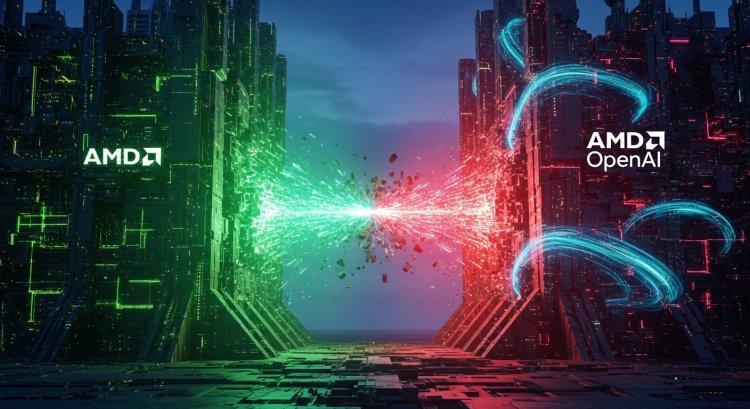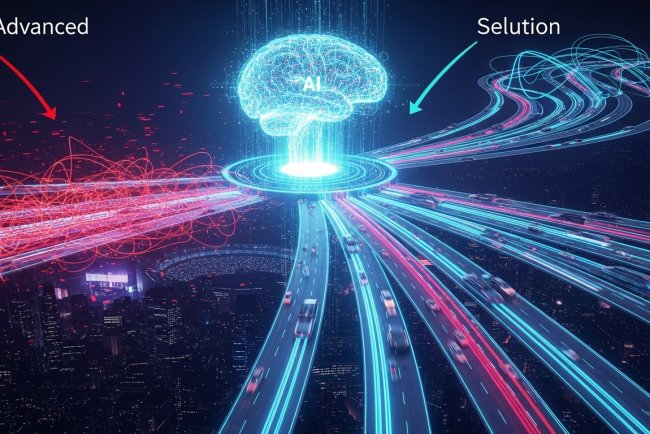AI Superpower Realignment-How the AMD–OpenAI Pact Signals a Shift From Chip Wars to Ecosystem War
Discover how the AMD–OpenAI multi-billion dollar chip deal is reshaping the global AI landscape, challenging Nvidia's dominance, and signaling a deeper shift toward compute independence and ecosystem realignment

Introduction: A New AI Power Bloc Is Forming
On October 6, 2025, a move that looked like just another chip deal between AMD and OpenAI actually marked the beginning of a strategic realignment in the global AI infrastructure landscape. While Nvidia has long dominated the AI chip market, this alliance may be less about raw hardware and more about the emergence of a new AI ecosystem bloc, where control, sovereignty, and long-term dominance are at stake.
1. Beyond Hardware: The Rise of Ecosystem Independence
This isn't just AMD selling chips — it's OpenAI making a geopolitical-level bet on building an alternate compute ecosystem. With Instinct MI450 GPUs and ROCm (AMD's CUDA alternative), OpenAI is helping AMD build the second viable AI hardware-software stack in the world.
✅ Why it matters: Just like Apple created its own chip ecosystem for control, OpenAI's move signals that AI labs no longer want to be at the mercy of a single vendor.
2. Compute Power as the New Oil — and OpenAI Just Dug a New Well
OpenAI's commitment to deploying six gigawatts of compute capacity using AMD hardware is nothing short of industrial-scale AI sovereignty. With one GW costing tens of billions of dollars, OpenAI isn't just buying chips — it's building the largest independent AI compute grid outside of Nvidia's ecosystem.
???? Analogy: In the 20th century, oil pipelines decided Power. In the 21st century, it's AI compute pipelines.
3. Strategic Equity: Why 10% of AMD Means More Than Money
AMD granting OpenAI equity warrants for 10% of its stock isn't just a reward — it's an alignment mechanism. It ensures that OpenAI has skin in the game to help AMD optimize hardware, push ROCm to maturity, and co-evolve the stack.
???? Think of it like this: OpenAI isn't just a customer — it's becoming AMD's AI R&D co-pilot.
4. The Silent War: Nvidia's Moat Is Now Breached
Nvidia has enjoyed a near-monopoly, thanks to CUDA's dominance. AMD + OpenAI directly challenges that. With a major customer validating AMD's stack, other hyperscalers (like AWS, Meta, or even Apple) may now feel confident breaking away from Nvidia's walled garden.
⚔️ What's happening: This deal may signal the beginning of "CUDA exodus" — a long-feared scenario for Nvidia.
5. Risk? Yes. But It's Calculated, Not Blind
This deal isn't a gamble. The equity is performance-based and tied to both deployment milestones and AMD stock performance. OpenAI doesn't burn cash upfront; instead, it gets upside only if AMD delivers.
nvestor takeaway: This is smart financial engineering — blending long-term tech bets with short-term capital risk mitigation.
6. The Bigger Picture: AI Cold War, Infrastructure Edition
From a global lens, this deal mirrors a broader trend: AI nationalism and compute independence. As countries and labs race to control AI development, the ability to build your own AI stack — from chip to model — is the ultimate power move.
???? Implication: Just like nations hoard rare earth metals, AI labs are now hoarding compute partnerships.
Conclusion: This Is
Not Just About Chips — It's About Control
The AMD–OpenAI deal marks a fundamental shift in how AI infrastructure is built, owned, and scaled. It isn't just a commercial agreement — it's the blueprint for the next phase of AI power dynamics, where vertical integration, ecosystem control, and compute sovereignty define the winners.
What's Your Reaction?

















